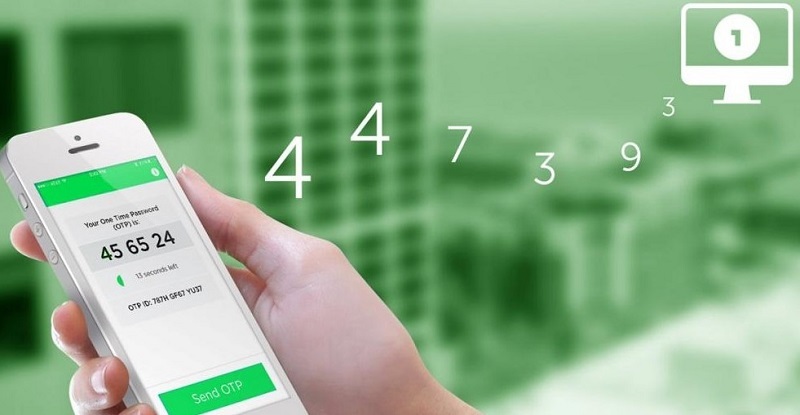1
2
3
4
5
6
7
8
9
10
11
12
13
14
15
16
17
18
19
20
21
22
23
24
25
26
27
28
29
30
31
32
33
34
35
36
37
38
39
40
41
42
43
44
45
46
47
48
49
50
51
52
53
54
55
56
57
58
59
60
61
62
63
64
65
66
67
68
69
70
71
72
73
74
75
76
77
78
79
80
81
82
83
84
85
86
87
88
89
90
91
92
93
94
95
96
97
98
99
100
101
102
103
104
105
106
107
108
109
110
111
112
113
114
115
116
117
118
119
120
121
122
123
124
125
126
127
128
129
130
131
132
133
134
135
136
137
138
139
140
141
142
143
144
145
146
147
148
149
150
151
152
153
| public class Totp
{
private Byte[] secret;
private static readonly DateTime epoch = new DateTime(1970, 1, 1, 0, 0, 0, DateTimeKind.Utc);
private TimeSpan defaultClockDriftTolerance { get; set; } = TimeSpan.FromMinutes(1);
public Totp(String secret, Boolean isBase32 = true) => this.secret = ConvertSecretToBytes(secret, isBase32);
public static String GenerateProvisionUrl(
String account,
Byte[] secret,
String issuer)
{
if (String.IsNullOrWhiteSpace(account))
{
throw new ArgumentNullException(nameof(account));
}
var UrlEncode = (String url) => Uri.EscapeDataString(url);
var RemoveWhiteSpace = (String str) => new String(str.Where(c => !Char.IsWhiteSpace(c)).ToArray());
account = RemoveWhiteSpace(UrlEncode(account));
if (!String.IsNullOrEmpty(issuer))
{
issuer = RemoveWhiteSpace(UrlEncode(issuer));
}
var encodedSecret = Base32Encoding.ToString(secret).Trim('=');
return String.IsNullOrWhiteSpace(issuer)
? $"otpauth://totp/{account}?secret={encodedSecret}"
: $"otpauth://totp/{issuer}:{account}?secret={encodedSecret}&issuer={issuer}";
}
public Boolean ValidatePIN(String pin) => ValidatePIN(pin, defaultClockDriftTolerance);
public Boolean ValidatePIN(
String pin,
TimeSpan timeTolerance)
{
return GetCurrentPINs(timeTolerance).Any(c => c == pin);
}
public String GetCurrentPIN() =>
GeneratePINAtInterval(GetCurrentCounter());
public String GetCurrentPIN(DateTime now) =>
GeneratePINAtInterval(GetCurrentCounter(now, epoch, 30));
private String[] GetCurrentPINs(
TimeSpan timeTolerance)
{
var codes = new List<String>();
var iterationCounter = GetCurrentCounter();
var iterationOffset = 0;
if (timeTolerance.TotalSeconds > 30)
{
iterationOffset = Convert.ToInt32(timeTolerance.TotalSeconds / 30.00);
}
var iterationStart = iterationCounter - iterationOffset;
var iterationEnd = iterationCounter + iterationOffset;
for (var counter = iterationStart; counter <= iterationEnd; counter++)
{
codes.Add(GeneratePINAtInterval(counter));
}
return codes.ToArray();
}
private static Byte[] ConvertSecretToBytes(
String secret,
Boolean secretIsBase32) =>
secretIsBase32 ? Base32Encoding.ToBytes(secret) : Encoding.UTF8.GetBytes(secret);
private String GeneratePINAtInterval(Int64 counter, Int32 digits = 6) =>
GenerateHashedCode(counter, digits);
private String GenerateHashedCode(Int64 iterationNumber, Int32 digits = 6)
{
var counter = BitConverter.GetBytes(iterationNumber);
if (BitConverter.IsLittleEndian)
Array.Reverse(counter);
var hmac = new HMACSHA1(this.secret);
var hash = hmac.ComputeHash(counter);
var offset = hash[hash.Length - 1] & 0xf;
var binary =
((hash[offset] & 0x7f) << 24)
| ((hash[offset + 1] & 0xff) << 16)
| ((hash[offset + 2] & 0xff) << 8)
| ((hash[offset + 3] & 0xff));
var password = binary % (Int32)Math.Pow(10, digits);
return password.ToString(new String('0', digits));
}
private Int64 GetCurrentCounter() => GetCurrentCounter(DateTime.UtcNow, epoch, 30);
private Int64 GetCurrentCounter(DateTime now, DateTime epoch, Int32 timeStep) =>
(Int64)(now - epoch).TotalSeconds / timeStep;
}
|

